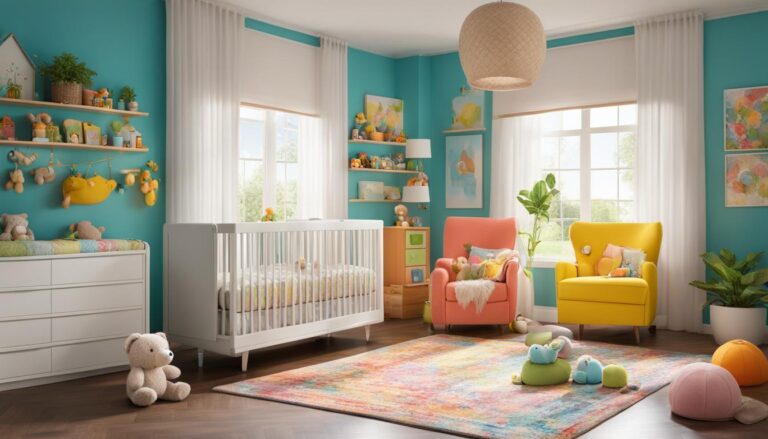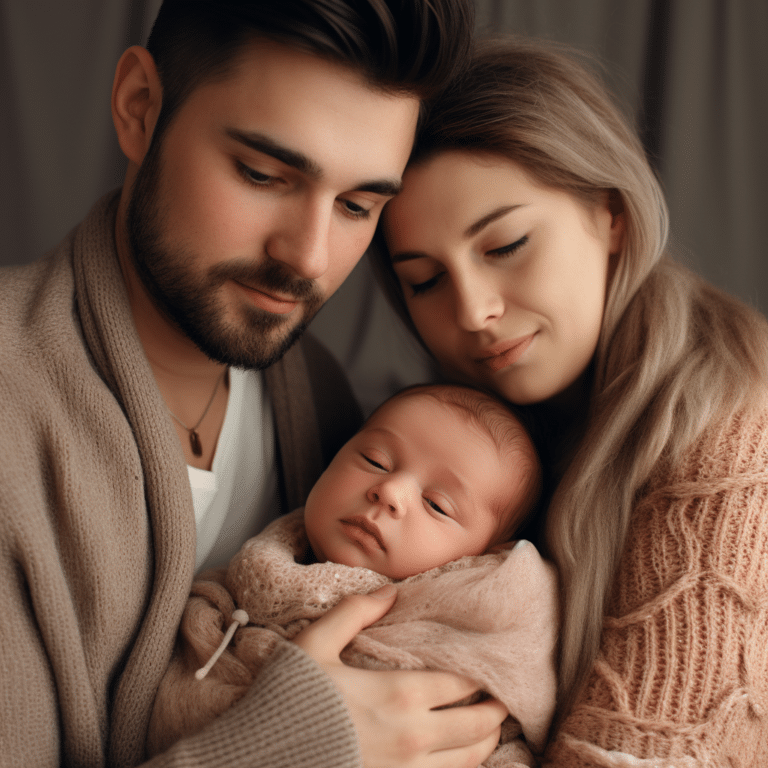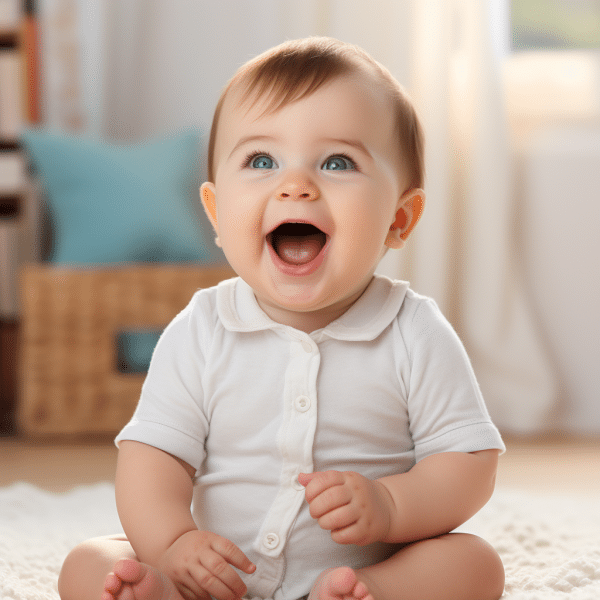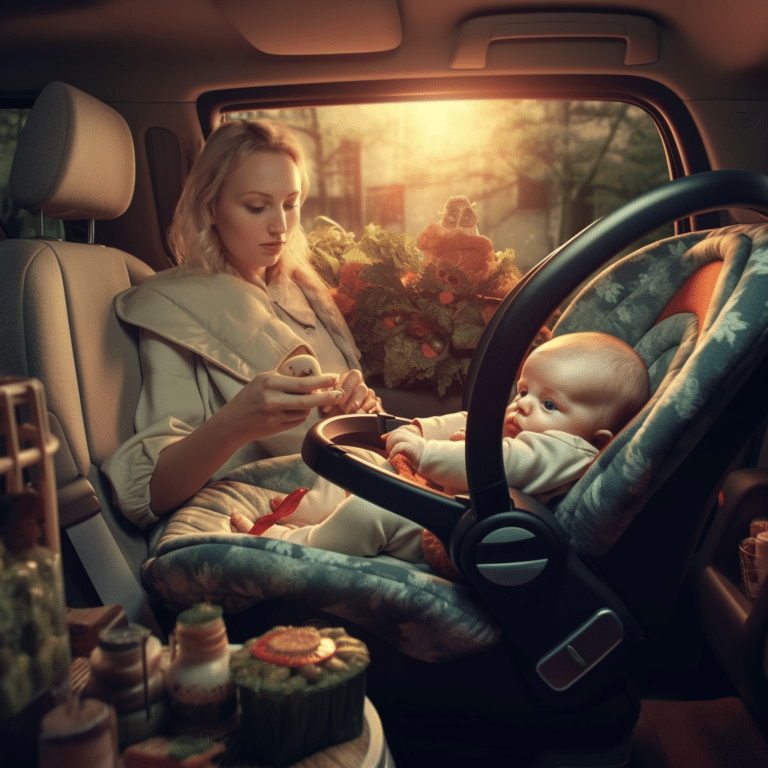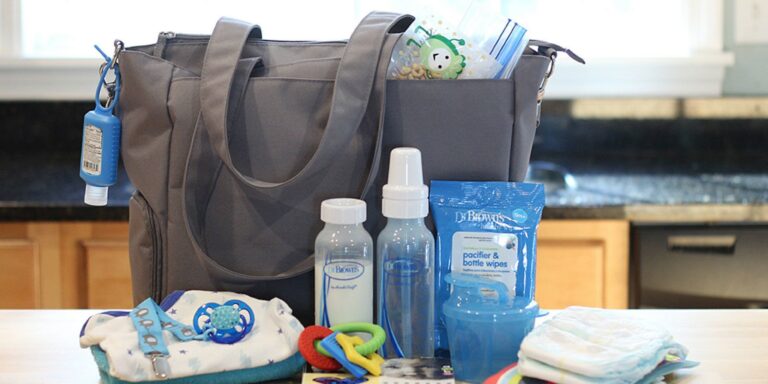Creating a Safe Baby Sleep Environment Guide
Creating a safe sleep environment for your baby is crucial for their physical and emotional well-being. It is also essential for reducing the risk of sudden infant death syndrome (SIDS). By following recommended safety guidelines, you can ensure that your baby sleeps comfortably and securely.
One of the most important aspects of a safe sleep environment is the crib. It is essential to choose a crib that meets safety standards and provides a secure and comfortable sleeping space for your baby. Additionally, pay attention to the bedding you use. Avoid using soft objects, such as pillows and stuffed toys, as well as loose bedding, as they can pose suffocation risks.
Another key factor in creating a safe sleep environment is the sleep position. The Canadian Paediatric Society recommends placing babies on their backs to sleep, as it greatly reduces the risk of SIDS. It is essential to ensure that your baby sleeps on a firm and flat surface, free from any obstructions.
By following these guidelines and creating a safe sleep environment for your baby, you can provide them with a peaceful and worry-free sleep experience, while also promoting their overall well-being.

Key Takeaways:
- Ensure the crib meets safety standards and provides a secure sleeping space.
- Avoid using soft objects and loose bedding, as they can pose suffocation risks.
- Place your baby on their back to sleep to reduce the risk of SIDS.
- Provide a firm and flat sleep surface for your baby.
- Follow recommended guidelines for creating a safe sleep environment.
The Importance of Back Sleeping for Babies
Putting babies to sleep on their backs greatly reduces the risk of SIDS. It is recommended by the Canadian Paediatric Society and other health organizations. Once babies can turn over on their own, there is no need to force them into the back sleep position. Foam wedges or towel rolls should not be used to keep babies on their sides. It’s important to have a crib that meets safety standards and provides a firm, flat surface for the baby to sleep on. Soft materials, loose bedding, and pillows should be avoided.
“Placing babies on their backs to sleep is the number one way to reduce the risk of SIDS.”
The American Academy of Pediatrics recommends that babies be placed on their backs for every sleep, including naps, until their first birthday. This sleep position allows for optimal airflow, reducing the risk of suffocation. It’s important to note that once babies can roll over on their own, they can be left in the sleep position they assume, as they have the strength and ability to move their heads to maintain an open airway.
| Sleep Position | Risk of SIDS |
|---|---|
| Back Sleeping | Lowest |
| Side Sleeping | Moderate |
| Stomach Sleeping | Highest |
It’s crucial to provide a safe sleep environment for your baby by following the recommendation of placing them on their back to sleep. This, combined with a firm and flat sleep surface, can greatly reduce the risk of SIDS and ensure a peaceful sleep for your little one.
Choosing the Right Sleep Surface
When it comes to creating a safe sleep environment for your baby, choosing the right sleep surface is crucial. Babies should sleep on a firm, flat surface that quickly returns to its original shape when pressed on. This helps reduce the risk of suffocation and ensures a safe and comfortable sleep for your little one.
Cribs, bassinets, portable cribs, or play yards that meet safety standards are recommended for use as sleep surfaces. It’s important to ensure that the mattress fits tightly and securely in the sleep space, and to use only a fitted sheet without any loose or excess material. This helps minimize the risk of accidental entrapment or suffocation.
Alternative sleep surfaces, such as car seats, strollers, swings, or slings, should not be used as regular sleep spaces for babies. These surfaces do not provide the necessary support and safety features required for safe sleep. It’s important to prioritize the use of dedicated sleep spaces that meet safety standards to ensure your baby’s well-being.
Table: Comparison of Sleep Surfaces
| Sleep Surface | Firmness | Recommended Use |
|---|---|---|
| Crib | Firm and flat | Main sleep space for infants |
| Bassinet | Firm and flat | Convenient for room sharing or smaller spaces |
| Portable Crib | Firm and flat | Great for travel and on-the-go sleeping |
| Play Yard | Firm and flat | Safe space for playing and sleeping |
By choosing the right sleep surface for your baby, you can ensure a safe and comfortable sleep environment. Remember to always follow safety guidelines and use sleep surfaces that meet the recommended standards for crib and bassinet safety.
Dangers of Soft Objects and Loose Bedding
When creating a safe sleep environment for your baby, it’s important to be aware of the dangers posed by soft objects and loose bedding. These items can increase the risk of suffocation or entrapment, potentially leading to serious harm. To ensure your baby’s safety, it is crucial to keep soft objects such as pillows and stuffed toys out of the sleep area. Additionally, avoid using blankets, comforters, bumper pads, and non-fitted sheets in your baby’s crib.
Weighted blankets and sleepers should also be avoided, as they can pose a suffocation risk. Instead, dress your baby in layers or use a wearable blanket to keep them warm during sleep. It’s important to maintain a comfortable temperature in the sleep area, ensuring that your baby doesn’t overheat. Excessive heat can increase the risk of SIDS (Sudden Infant Death Syndrome).
By following these safety precautions, you can reduce the risk of accidents and provide a safer sleep environment for your baby. Remember, a firm and flat sleep surface, free from soft objects and loose bedding, is essential for your baby’s well-being. Prioritize their safety by adhering to these guidelines and promoting a secure and comfortable sleep environment.
| Dangers | Precautions |
|---|---|
| Soft objects (pillows, stuffed toys) | Keep them out of the sleep area |
| Loose bedding (blankets, comforters) | Avoid using them in the crib |
| Weighted blankets and sleepers | Do not use them |
| Overheating | Maintain a comfortable sleep temperature |
Dangers of Soft Objects and Loose Bedding
“Soft objects and loose bedding in the sleep area can pose a significant suffocation risk for infants. It’s crucial to keep pillows, stuffed toys, blankets, and comforters away from your baby’s crib. Creating a safe sleep environment means prioritizing their well-being and eliminating potential hazards.” – SafeSleep.org
- Avoid using pillows, stuffed toys, and loose bedding in the sleep area.
- Dress your baby in layers or use a wearable blanket for warmth.
- Maintain a comfortable sleep temperature to prevent overheating.
- Always prioritize the safety of your baby by following recommended guidelines.
The Risks of Bedsharing
Bedsharing, where the baby sleeps in the same bed as the parents, is not recommended as it increases the risk of SIDS and other sleep-related deaths. Babies should have their own sleep space in the same room, such as a crib, bassinet, or portable play yard. Falling asleep with the baby on a couch, sofa, or armchair also increases the risk of suffocation. It is particularly dangerous when adults fall asleep while feeding or comforting the baby. Room sharing, without bedsharing, is a safer option and can reduce the risk of SIDS by up to 50%.
Canadian Paediatric Society
According to the Canadian Paediatric Society, bedsharing poses several risks to infants. One of the main concerns is the increased chance of accidental suffocation. The soft bedding, pillows, and blankets on adult beds can easily cover a baby’s face and obstruct their airway. Additionally, infants can become trapped or entrapped between the mattress and the bed frame or headboard, further increasing the risk of suffocation. Bedsharing also increases the likelihood of overheating, which is a known risk factor for SIDS.
It is important to create a safe sleep environment for your baby by providing them with their own separate sleep surface. This can be a crib, bassinet, or portable play yard that meets safety standards. Placing the sleep space next to the parents’ bed allows for easy access and monitoring without the dangers associated with bedsharing. Room sharing without bedsharing also promotes breastfeeding and facilitates easier nighttime feedings and comforting, enhancing the bond between parent and child.
Sleep Surface
By avoiding bedsharing and opting for room sharing instead, parents can significantly reduce the risks of SIDS and sleep-related accidents. Creating a safe sleep environment involves providing a firm and flat sleep surface, avoiding soft objects and loose bedding, and ensuring a comfortable and cool temperature in the room. Following these guidelines will give parents peace of mind knowing that they are promoting the safest sleeping conditions for their baby.
| Risks of Bedsharing | Safety Recommendations |
|---|---|
| Increased risk of suffocation | Provide a separate sleep space for the baby |
| Possible entrapment or trapping between mattress and bed frame | Use a crib, bassinet, or portable play yard that meets safety standards |
| Higher chance of overheating | Maintain a comfortable and cool sleep environment |
| Obstruction of airway by soft bedding, pillows, or blankets | Avoid soft objects and loose bedding in the baby’s sleep area |
Maintaining a Safe Sleep Temperature
When it comes to creating a safe sleep environment for your baby, maintaining the right sleep temperature is crucial. Overheating can increase the risk of SIDS, so it’s important to keep your baby at a comfortable temperature. Here are some tips to help you maintain a safe sleep temperature for your little one:
- Dress your baby appropriately: It’s recommended to dress your baby in one more layer than what makes you comfortable. You can use light sleepers or onesies to keep them warm without risking overheating.
- Monitor signs of overheating: Keep an eye out for signs that indicate your baby might be overheating, such as sweating or flushed skin. If you notice any of these signs, remove a layer of clothing or adjust the room temperature accordingly.
- Avoid using hats indoors: While hats can keep your baby warm outside, they can also cause overheating when worn indoors. It’s best to skip the hats when your baby is sleeping to ensure they stay at a comfortable temperature.
Remember, maintaining a safe sleep temperature is essential in providing a conducive sleep environment for your baby. By following these guidelines, you can help reduce the risk of overheating and promote safe sleep practices.
“Maintaining a comfortable sleep temperature is crucial for your baby’s safety and well-being. It’s important to dress them appropriately and monitor signs of overheating to ensure a safe sleep environment.”
Table: Recommended Sleep Temperature Guidelines
| Age of Baby | Recommended Sleep Temperature |
|---|---|
| Newborn (0-3 months) | Between 68°F – 72°F (20°C – 22°C) |
| 3-6 months | Around 68°F (20°C) |
| 6-12 months | Between 65°F – 68°F (18°C – 20°C) |
The Importance of Pacifiers and Breastfeeding in Reducing the Risk of SIDS
When it comes to creating a safe sleep environment for your baby, pacifiers and breastfeeding play a significant role in reducing the risk of Sudden Infant Death Syndrome (SIDS). The use of pacifiers, especially at nap time and bedtime, has been shown to decrease the risk of SIDS, even if the pacifier falls out after the baby falls asleep. It is important to introduce pacifiers after breastfeeding is established and if the baby does not want a pacifier, there is no need to force it. Pacifiers can provide comfort and soothing for babies, promoting better sleep and reducing the risk of SIDS.
In addition to pacifiers, breastfeeding also plays a crucial role in reducing the risk of SIDS. Studies have shown that breastfeeding provides protection against SIDS, and the longer babies are given breast milk, the more protection it offers. Breast milk contains essential antibodies and nutrients that contribute to the baby’s overall health and well-being. Breastfeeding also promotes a closer bond between the mother and baby, fostering a sense of security and comfort for the baby during sleep.
Ensuring Safe Sleep Practices
While pacifiers and breastfeeding can help reduce the risk of SIDS, it is important to practice safe sleep practices in conjunction with these measures. Babies should sleep on their backs on a firm and flat sleep surface, such as a crib that meets safety standards. Loose bedding, soft objects, and pillows should be avoided, as they can pose suffocation hazards. Room sharing without bedsharing is also recommended, as it allows for close monitoring and easy access to the baby while preventing the risks associated with bedsharing. By combining these practices with the use of pacifiers and breastfeeding, parents can provide their baby with a safe and comfortable sleep environment.
| Pacifiers and Breastfeeding | SIDS Risk |
|---|---|
| Pacifiers | Reduce the risk of SIDS |
| Breastfeeding | Protect against SIDS |
Room Sharing for Safer Sleep
When it comes to creating a safe sleep environment for your baby, room sharing is a recommended practice by the AAP. Room sharing involves having the baby sleep in the same room as the parents but in a separate sleep space, such as a crib, bassinet, or play yard. This arrangement offers several benefits, including reducing the risk of SIDS by as much as 50%.
By having your baby close to you, room sharing allows for easier feeding, comforting, and monitoring during sleep. Placing the crib, bassinet, or play yard near your bed provides easy access to your little one without the need to get fully out of bed. This proximity also promotes bonding and enhances the parent-child relationship.
In addition to its safety benefits, room sharing can provide peace of mind for parents. Being in the same room allows you to quickly respond to your baby’s needs, whether it’s a feeding, a diaper change, or simply providing comfort. It also allows you to better observe your baby’s breathing and monitor for any signs of distress.
It’s important to note that while room sharing is encouraged, bedsharing, where the baby sleeps in the same bed as the parents, is not recommended. Bedsharing increases the risk of SIDS and other sleep-related deaths. To maintain a safe sleep environment, ensure that the baby has their own dedicated sleep space within the room.
Avoiding Substance Use and Getting Prenatal Care
Ensuring a safe sleep environment for your baby begins before they even enter the world. Taking care of yourself during pregnancy is crucial in reducing the risk of SIDS and providing a healthy start for your little one. One important aspect is getting regular prenatal care. Regular visits to your healthcare provider will monitor your health and the baby’s development, ensuring any potential issues are identified early on. Prenatal care also provides an opportunity to discuss any concerns or questions you may have about creating a safe sleep environment for your baby.
In addition to prenatal care, it is essential to avoid substance use during pregnancy. Alcohol, marijuana, opioids, and illicit drugs can all pose serious risks to your baby’s health, including an increased risk of SIDS. It’s important to seek help if you are struggling with substance use and to create a support network that can assist you on your journey to a safe and healthy pregnancy.
“Regular prenatal care is important in reducing the risk of SIDS. Avoiding substance use during pregnancy, including alcohol, marijuana, opioids, or illicit drugs, is crucial.”
SIDS is a devastating tragedy that can be prevented through education and proactive measures. By getting regular prenatal care and abstaining from substance use, you are taking critical steps to protect your baby’s well-being. Remember, every choice you make during pregnancy has the potential to shape your child’s future, and prioritizing their safety is paramount.
| Prenatal Care Checklist |
|---|
| ✔ Schedule regular prenatal appointments with your healthcare provider |
| ✔ Discuss your concerns and questions about creating a safe sleep environment |
| ✔ Follow your healthcare provider’s recommendations for a healthy pregnancy |
| ✔ Avoid alcohol, marijuana, opioids, and illicit drugs during pregnancy |
| ✔ Seek help if you are struggling with substance use |
| ✔ Build a support network to assist you on your journey to a safe and healthy pregnancy |
Conclusion
Creating a safe sleep environment is essential for SIDS prevention and promoting baby sleep safety. By following the recommended guidelines, parents can provide their babies with a peaceful and worry-free sleep environment.
Key factors in a safe sleep environment include placing the baby on their back to sleep, using a firm and flat sleep surface, and avoiding soft objects and loose bedding. Room sharing without bedsharing can also greatly contribute to a safe sleep space for the baby.
It’s important to prioritize a smoke-free environment, both during pregnancy and around the baby, to reduce the risk of SIDS. Regular prenatal care and avoiding substance use, including alcohol and illicit drugs, are crucial in ensuring the baby’s well-being.
Promoting breastfeeding and the use of pacifiers can further reduce the risk of SIDS. Pacifiers, if introduced after breastfeeding is established, can be used at nap time and bedtime to provide added protection.
FAQ
What is the recommended sleep position for babies?
The Canadian Paediatric Society recommends that babies sleep on their backs to reduce the risk of SIDS.
How should the crib be prepared for a safe sleep environment?
The crib should meet safety standards, have a firm and flat sleep surface, and be free of soft objects and loose bedding.
Is bedsharing safe for babies?
No, bedsharing increases the risk of suffocation and is not recommended. Room sharing without bedsharing is a safer alternative.
How can I maintain a safe sleep temperature for my baby?
It’s important to keep the baby at a comfortable temperature by dressing them in layers and keeping the sleep area cool.
Are pacifiers and breastfeeding recommended for reducing the risk of SIDS?
Yes, both pacifier use and breastfeeding have been shown to lower the risk of SIDS.
What is room sharing, and why is it recommended?
Room sharing means having the baby sleep in the same room as the parents but in a separate sleep space. It reduces the risk of SIDS by up to 50%.
How can substance use during pregnancy affect the risk of SIDS?
Substance use, including alcohol, drug, and nicotine use, increases the risk of SIDS. It’s important to avoid these substances during pregnancy and around the baby.


